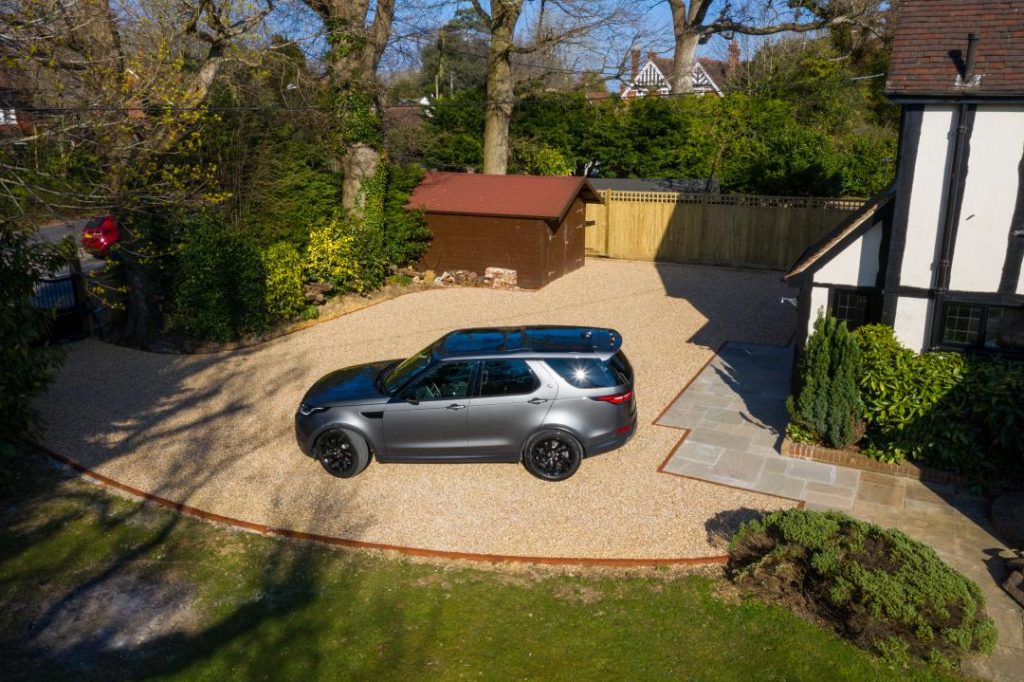Gravelrings
Gravel grid system

When you invest in a new gravel driveway, you’re choosing a premium finish. Gravel driveways not only elevate the appearance of your home, but they can add value too.
You can spend a lot of time deciding on the best gravel, including the size and colour to opt for. But driveway decisions go beyond merely considering the colour and optimum layout. Finishing touches, such as lighting, need to be thoughtfully designed and how the edges of the driveway will be finished should never be overlooked. But what are the options when it comes to driveway edging?
The primary purpose of edging is to help keep gravel in place. Installing Beauxfort Gravelrings beneath the surface of the driveway further minimises gravel migration. A clear border also gives a pleasing aesthetic to a driveway, creating neat lines that form a sharp boundary between the driveway and the lawns or plant beds beside it.
A long-lasting edging solution is to use brick, stone or concrete. While it may be tempting to use delicate Victorian-style scallop edging, these can break if inadvertently driven over. When choosing a driveway border, it’s best to consider hardwearing options that can withstand an occasional car tyre (but not cause damage) and select a material that will last as long, and is as low maintenance, as your driveway.
While the idea of using bricks may sound industrial, they can be laid in a sawtooth style to create an attractive design. Bedding the bricks into concrete provides a hardy and long-lasting finish too. It’ll suit some properties more than others, so consider if the overall effect will complement your property development plans.
Sandstone and granite are also popular edging options, both being hardwearing and available in complementary shades to your gravel selection. But the choices go far beyond colour – you’ll need to consider whether you want textured, tumbled, natural or sawn, depending on the overall aesthetic you want to achieve.
If you want to conceal as much of the edging as possible and create a seamless effect between the driveway and lawn or beds, consider a metal edge. Aluminium or corten steel are both long-lasting solutions that form a pleasingly sharp edge. Metal edging is flexible enough to create curves when required too.
There’s an array of different wood options to use as edging, although a drawback is that it’s not as long-lasting as other edging options. Overall, timber edges tend to create a natural look that is particularly suited to countryside properties or barn conversions. If you decide on wood, there’s a vast array of specific choices to make. Pressure-treated softwood is an economical option, but using oak is a more sustainable choice. Woven willow can create a rustic look, perhaps best suited to pretty cottages.
Creating an eco-garden is ever more critical, which can mean minimising the plastic we introduce into our gardens. But there are considerable innovations in recycled plastic which helps avoid more plastic needlessly going to landfill. Plastic and rubber edging options might be worth considering if you want to conceal the edge between your gravel driveway and the lawn, in a similar fashion to metal edging.
Achieve the perfect gravel driveway with the Beauxfort Gravelrings system. Check out our website www.beauxfort.com for more information about the Beauxfort landscape systems, design inspiration and to request a free sample, or talk to our friendly team about your project by contacting us on 0330 055 2599 or info@beauxfort.com.